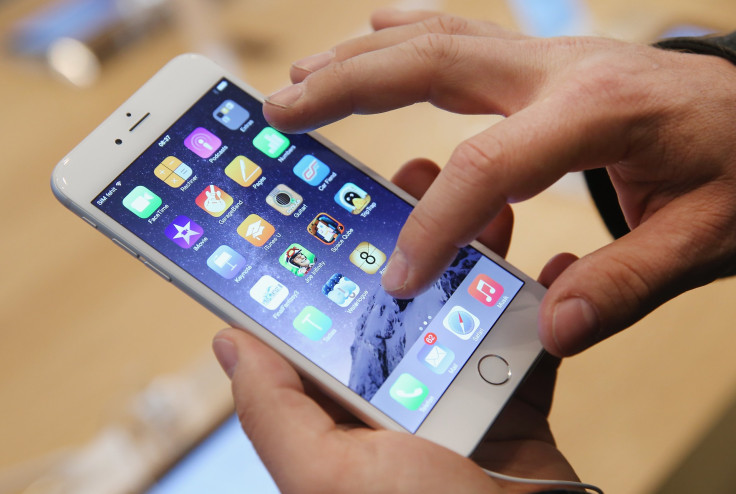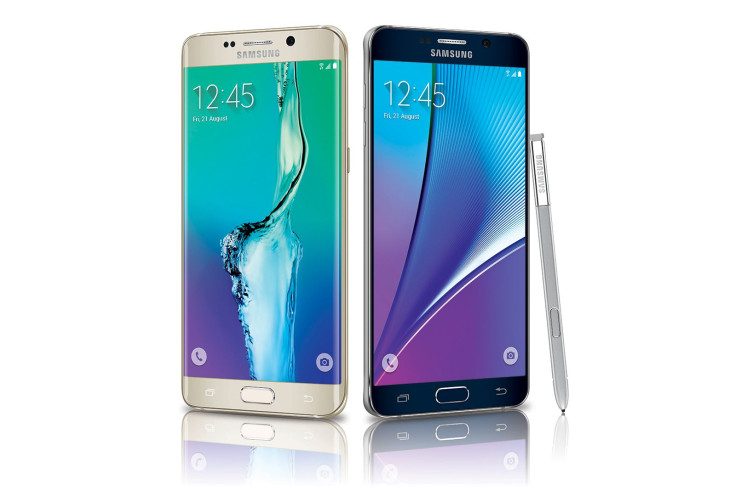IPhone 6S vs. Galaxy S6: This Is Why Apple Inc. Is Winning The Smartphone Battle

The palindromic similarity between the Galaxy S6 and the iPhone 6S is about as close as Samsung Electronics Corp. is getting to Apple Inc. in the smartphone market these days.
On Wednesday Apple unveiled its 11th iPhone -- the iPhone 6S. Earlier this year Samsung unveiled the Galaxy S6, which is the South Korean giant's 10,456th smartphone.
OK, so that last number might not be true, but it feels like it is. The Galaxy S6 is just one part of Samsung’s long and wide-ranging attempt to supplant the iPhone as the smartphone of choice for hundreds of millions of people -- an effort that is failing miserably.
At one point, the Galaxy S range of smartphones from Samsung looked like it could be a genuine challenger to the dominance of the iPhone as the world’s favorite smartphone. The Galaxy S3 and Galaxy S4 sold in (relatively) huge numbers, and it looked like Samsung was on the right track.
However, in the past couple of years, as Samsung has seen sales of the Galaxy S5 falter, it has sought to diversify in order to hold its position as the world's biggest smartphone manufacturer.
Flagships, Flagships, Flagships

And so this year, alongside the flagship Galaxy S6, we have the flagship Galaxy S6 edge, the flagship Galaxy Note 5, the flagship Galaxy S6 edge+ and the flagship Galaxy S6 active. Before the end of the year, we will likely see the Galaxy S6 mini, the Galaxy Note 5 Active and the Galaxy S6 Donald Trump.
Again, we're kidding with that last model, but the point stands. Samsung is making it increasingly difficult for users to decide which smartphone they should buy. In 2014 alone, Samsung released 56 smartphones -- at current rates, it would take Apple 28 years to release the same number of new phones.
Samsung has said it is trying to cut down, and so far this year, according to GSM Arena’s database, it has released "only" 21 smartphones -- though if you include variants, that figure increases dramatically.
Tick, Tock
On the other hand, Apple is following a much more restricted course, allowing customers to know exactly what to expect.
Everyone knows that every September brings a new iPhone, and while that might mean lower iPhone sales in the third quarter of every year as people hold off updating, it also means that consumers are not confused.
Add to this the tick-tock update cycle where Apple updates the design of the iPhone every two years, while the alternate S update -- which we saw on Wednesday -- improves upon an already excellent phone. As noted, upgrading every two years on the S update is in fact the smart move.
Apple gives users three basic choices: the 4.7-inch iPhone 6S, the 5.5-inch iPhone 6S Plus and the 4.5-inch iPhone 5S. While some may bemoan the lack of diversity, it means Apple can control the experience on the phones much more tightly, and the result is customer satisfaction ratings in the high 90s, which Tim Cook is always keen to mention in press conferences and earnings calls.
Samsung never boasts about customer satisfaction ratings. It is not clear why.
Radically Different
Think about it: People know that the iPhone is a good phone. There's little debating that, and Apple doesn’t want to upset that perception by launching something radically different.
Instead, it has taken the iPhone 6 -- which was universally praised by reviewers as well as customers -- and improved it dramatically. It has made one of the best smartphone cameras even better; it has boosted performance with the A9 chip; it has added a unique and potentially very useful feature with 3D Touch. As Apple says, “The only thing that’s changed is everything.”
Samsung, on the other hand, changes the look and feel of its Galaxy S range pretty dramatically every year, adding and removing features at random and failing to provide a consistent experience for those looking to upgrade from a previous model. They may not look radically different at first glance, but pick them up and use them, and the subtle change of a button or sensor means learning all over again how the phone works.
Getting The Message Across
The issue isn’t about whether the Galaxy S6 and Galaxy S6 edge are good smartphones -- they are -- the issue is that Samsung simply does not communicate why they are great smartphones nearly as well as Apple does with the iPhone. Samsung has gotten better at promoting its own smartphones, but there is still too much of this type of completely misjudged presentation for the Galaxy S4.
While Apple’s stagecraft at such events is typically superb, it is not immune to similar mistakes, as we saw with senior vp Eddy Cue’s embarrassing Apple Music presentation at WWDC this year.
The problem comes from the fact that Samsung is getting squeezed at both ends of the smartphone market. At the premium end, Apple is dominating while at the budget end of the market -- where Samsung saw exponential growth in recent years -- it is being surpassed by a growing cadre of Chinese smartphone makers who are offering better hardware at lower prices and are willing to undercut Samsung at every turn just to gain some market share.
Samsung needs to rethink its smartphone strategy, but it may already be too late to follow in Apple's footsteps and offer customers a clear choice of the best technology the company has to offer in a small range of smartphones that will cover the majority of the market.
© Copyright IBTimes 2024. All rights reserved.






















